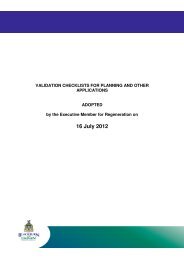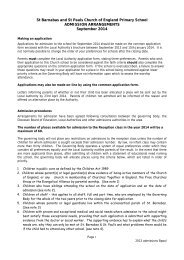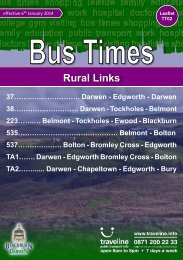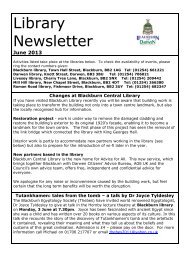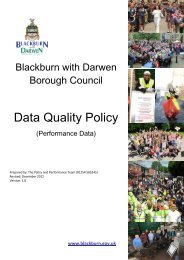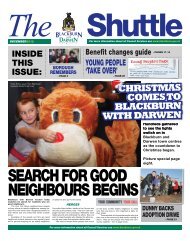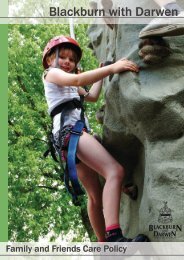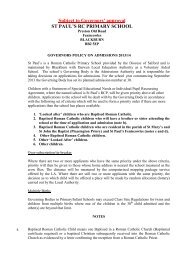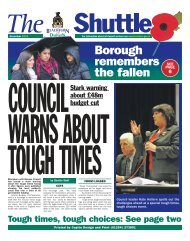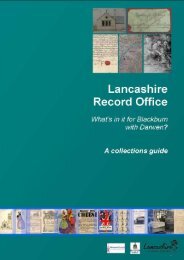Witton Park historical report - Blackburn with Darwen Borough Council
Witton Park historical report - Blackburn with Darwen Borough Council
Witton Park historical report - Blackburn with Darwen Borough Council
Create successful ePaper yourself
Turn your PDF publications into a flip-book with our unique Google optimized e-Paper software.
Assessment of <strong>Witton</strong> <strong>Park</strong> House, <strong>Witton</strong> <strong>Park</strong>, <strong>Blackburn</strong><br />
5. <strong>Witton</strong> <strong>Park</strong> House and the Fielden family<br />
5.1 One of the earliest documentary references to the Fielden family is in the<br />
early 16 th century when Henry Ffelden was made a trustee for lands<br />
granted for a chantry chapel in <strong>Blackburn</strong> church. 21 The family were<br />
considered yeomen, that is well-to-do farmers, but not gentry, but by the<br />
early 18 th century, when Henry Fielden married Elizabeth Sudell, he was<br />
styled a gentleman. 22 By this date, the Fieldens were well-established<br />
members of <strong>Blackburn</strong>’s merchant class, having made their fortune from<br />
the cotton trade. 23 Henry Fielden was a member of the new elite of<br />
<strong>Blackburn</strong> society, and this is reflected in his acquisition of the manor of<br />
<strong>Blackburn</strong> in 1721, along <strong>with</strong> two other merchants, William Baldwin and<br />
William Sudell, although he soon bought out the others 24 The Fielden<br />
family owned large areas of land throughout the borough of <strong>Blackburn</strong>,<br />
and played a key role in the growth of the town by providing land for<br />
development and donating land for major <strong>Blackburn</strong> landmarks and<br />
institutions such as Corporation <strong>Park</strong>, the Technical College and Grammar<br />
School. 25<br />
5.2 The purchase of the manor of <strong>Witton</strong> and <strong>Witton</strong> Hall provided land on<br />
which Henry Fielden’s grandson, also called Henry, could build a mansion<br />
house befitting his status as one of <strong>Blackburn</strong>’s most influential and<br />
wealthy citizens. The house was built in 1800, described as of freestone in<br />
the Grecian style. 26 <strong>Witton</strong> Old Hall was then advertised to let as <strong>Witton</strong><br />
Hall Milk Farm in 1803-4, 27 but it had fallen into disuse and was in ruins by<br />
1836. 28 The park was enclosed from the surrounding land, including the<br />
farm of Coo Hill, and stretched from the Preston to <strong>Blackburn</strong> road in the<br />
south to the foot of Billinge Hill in the north. Buncer Lane forms the<br />
eastern boundary, while the west side is marked by the footpath known as<br />
Killiard Lane. A footpath, which ran from <strong>Witton</strong> Stocks to Pleasington via<br />
<strong>Witton</strong> Hall, was diverted in 1819 to avoid the newly enclosed park. 29<br />
21 Abram 1877, 756<br />
22 Abram 1877, 757<br />
23 Beattie 1992, 29<br />
24 Beattie 1992, 29<br />
25 Beattie 1992, 31<br />
26 Durham 1861, 28<br />
27 Scheduling description taken from www.magic.gov.uk<br />
28 Baines 1836, 359<br />
29 LRO DDFd 11/5 plan of foot path<br />
Egerton Lea Consultancy Ltd 2009 6




